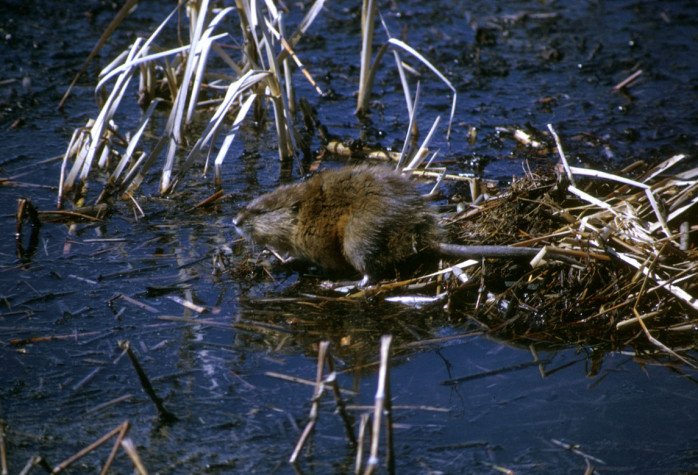 The seemingly widespread, long term decline in muskrat populations has been puzzling to trappers and wildlife managers for years. Despite less trapping pressure and far lower harvest, muskrat numbers continue to go down. Theories attempting to explain lower rat numbers range from habitat loss, higher populations of predators, disease, and many others.
The seemingly widespread, long term decline in muskrat populations has been puzzling to trappers and wildlife managers for years. Despite less trapping pressure and far lower harvest, muskrat numbers continue to go down. Theories attempting to explain lower rat numbers range from habitat loss, higher populations of predators, disease, and many others.
Pennsylvania furbearer biologist Tom Hardisky has his own theory: cleaner water. He believes that nutrient inputs into waterways and the corresponding abundant vegetation growth made for very high muskrat populations decades ago, and as we’ve cleaned up our waters and reduced nutrient runoff, streams grow less vegetation and support fewer muskrats.
Muskrats thrive in aquatic environments — swamps, marshes, ponds and streams — with rich plant growth that serves as a food source and cover. Decades ago when strict regulations weren’t yet enacted, more nutrients entered the water and sparked the growth of aquatic plants. Water courses near farms comprised high-quality muskrat habitat at the time, Hardisky said.
But as the water entering swamps, ponds and other aquatic environments became cleaner, plant growth became less lush.
As a result, what was once high-quality muskrat habitat is lost.
“Prior to the 1980s, nutrient flushing was common in streams and rivers when human and livestock waste entered these water systems. Muskrats did very well under these conditions,” Hardisky said. “Muskrats disappear from these types of wetlands when nutrients are used up. Ponds and wetlands in agricultural areas that occasionally receive nutrients from manure runoff often have sustained muskrat populations.”
Hardisky may be onto something here, though there are sure to be other causes. For instance, muskrat declines have been seen in places that never had pollution inputs. Still, nobody else has come up with a great explanation for the muskrat population phenomenon, so he deserves some credit for taking a stab at it. And as Hardisky explains, muskrats populations, though lower, aren’t in danger of going away anytime soon. Populations are still more than adequate to support trapping harvest, which is good, because support from the fur industry is critical to sound management of furbearer populations.
I have also noticed greater than 80% of the rats I harvest are males.